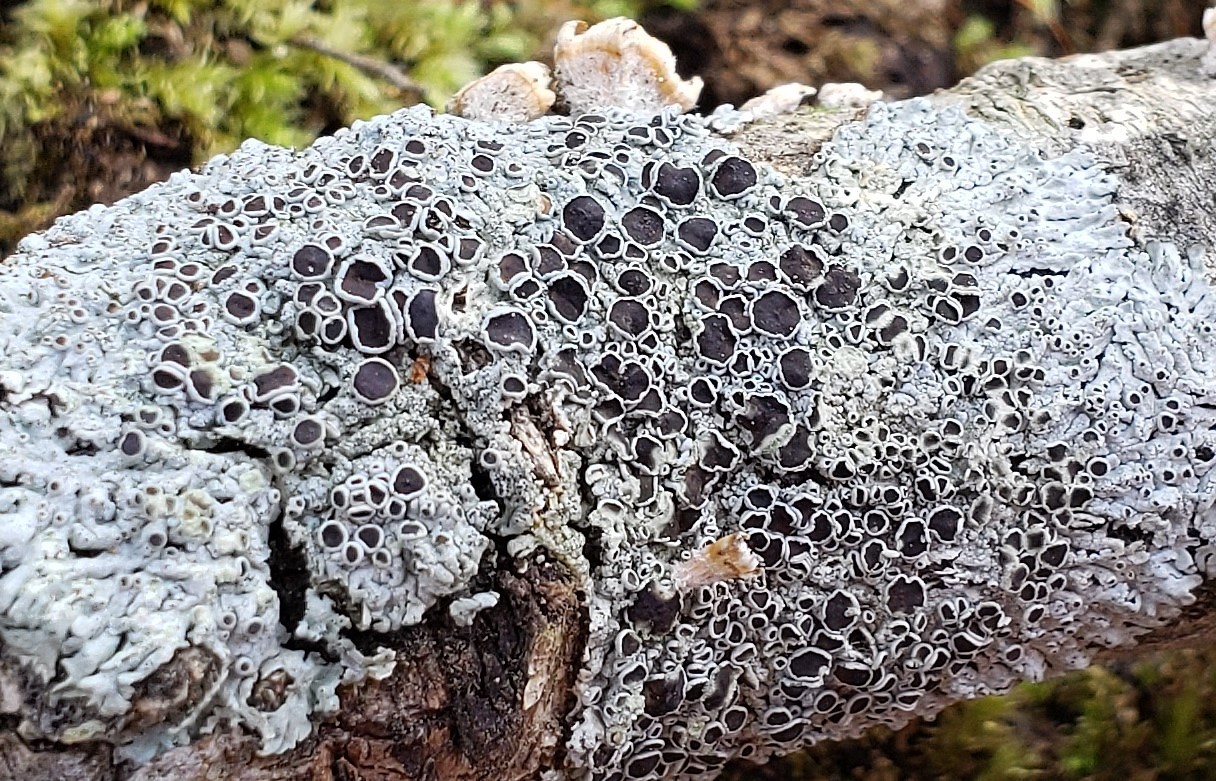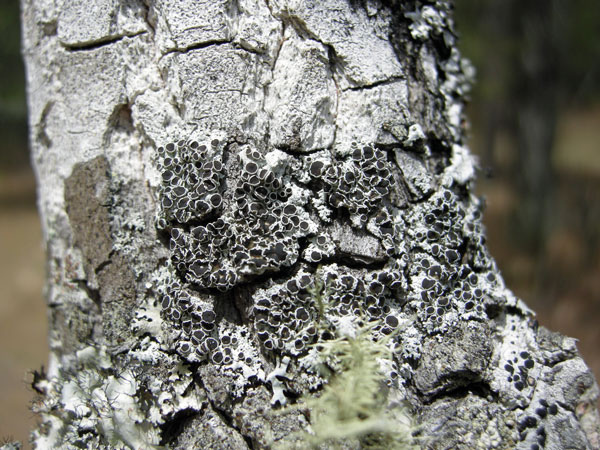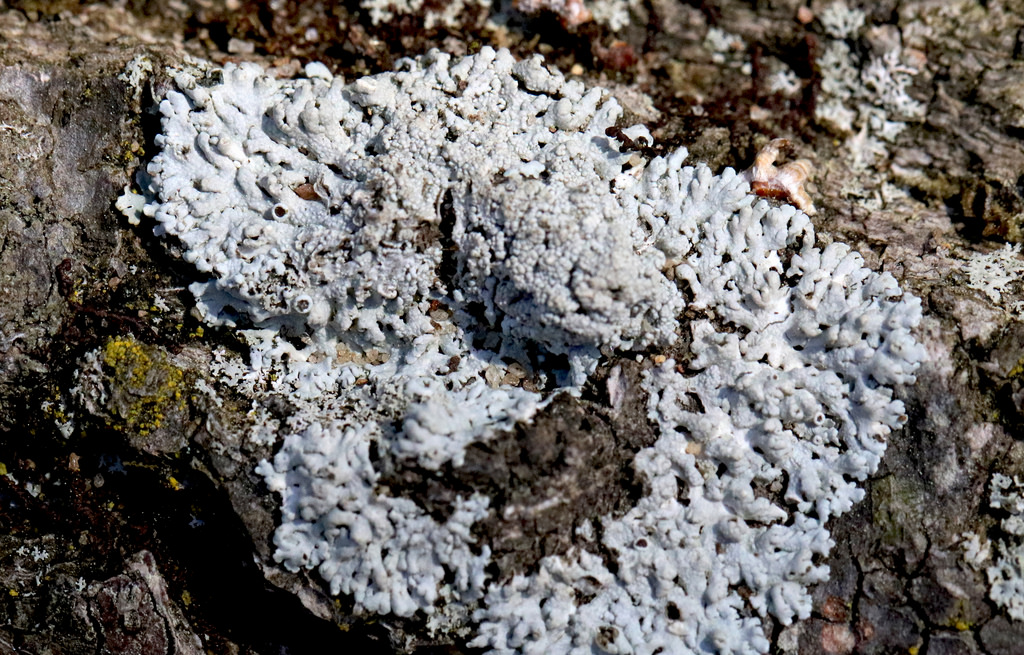Map Snapshot







21 Records
Seasonality Snapshot
Source: Wikipedia
| Physcia aipolia | |
|---|---|

| |
| Scientific classification | |
| Domain: | Eukaryota |
| Kingdom: | Fungi |
| Division: | Ascomycota |
| Class: | Lecanoromycetes |
| Order: | Caliciales |
| Family: | Physciaceae |
| Genus: | Physcia |
| Species: | P. aipolia
|
| Binomial name | |
| Physcia aipolia | |
| Synonyms[1] | |
|
List
| |

Physcia aipolia, commonly known as the Hoary rosette lichen, is a lichen species of fungus in the genus Physcia, and family Lecanoromycetes.[2] Physcia aipolia is a species of lichen in the family Physciaceae.[3] It has a worldwide distribution.[1]Physcia aipolia is a known host species to the lichenicolous fungus species Muellerella lichenicola.[4] It is characterized by the pale blue to gray thallus with many apothecia.[5] Physcia aipolia is a common, widely distributed species, and can be found growing on a variety of trees and branches.
Morphology
[edit]Physcia aipolia, which is also known as the Hoary rosette lichen, is characterized by a pale blue to gray thallus. This foliose thallus typically grows approximately 6 centimeters in diameter.[6] Physcia aipolia lack a specialized root structure. There are numerous apothecia present, with discs that are dark gray to black in color. The apothecia can be up to 2 millimeters in diameter, and the shape ranges from flat to convex.[7] The apothecia contain ascospores that are brown in color, and 16-29 x 7-12 micrometers.[8][7] There are no soredia or isidia present.[7] The lower surface is white to pale brown in color, and it contains many pale rhizines.[8]
Habitat and Ecology
[edit]Physcia aipolia is a common lichen, that typically grows in well-lit, nutrient dense areas.[9] It is often found on a variety of tree bark and wood.[7] Physcia aipolia is recognized as having a secure and apparently secure state and provisional conservation status.[10] Physcia aipolia has a wide coverage of habitat ranging from Eastern Canada, Alaska, California, Wisconsin, Michigan, and Missouri.[7] In addition, Physcia aipolia growth is not limited by elevation, and the lichen is found at both sea level and upper elevation environments across North America. It is found in both rural and urban environments, and this lichen can tolerate environmental stress and desiccation in arctic, temperate, and boreal areas of North America and Eurasia.[11] Physcia aipolia is resistant to pollution, and it has been used as a bioindicator to monitor air quality by the USDA.[12][13] Since Physcia aipolia does not have protective structures, environmental chemicals are reabsorbed. Physcia aipolia has been used to measure regional levels of Al, Cr, Cu, Fe, N, and S, which are then compared to local air pollution data.[13]
Chemical reactions
[edit]The medulla and cortex has a K+ yellow test, due to atranorin and zeorin.[8][7]
References
[edit]- ^ a b "Physcia aipolia". Global Biodiversity Information Facility. Retrieved 25 October 2022.
- ^ "Index Fungorum - Names Record". www.indexfungorum.org. Retrieved 2023-05-06.
- ^ "Physcia aipolia". fungi.myspecies.info. Retrieved 2023-05-06.
- ^ Brackel, Wolfgang von (2008). "Phoma ficuzzae sp. nov. and some other lichenicolous fungi from Sicily, Italy". Sauteria. 15: 103–120.
- ^ Walewski, Joe (2007). Lichens of the north woods. Duluth, MN: Kollath+Stensaas Pub. ISBN 978-0-9792006-0-1. OCLC 148762316.
- ^ Jones Medlin, Julie (1996). Michigan lichens. Bloomfield Hills, Mich: Cranbrook Institute of Science. ISBN 0-87737-038-9. OCLC 833215965.
- ^ a b c d e f Thomson, John W. (2003). Lichens of Wisconsin ([2nd ed.] ed.). Madison, WI: Wisconsin State Herbarium, Dept. of Botany, University of Wisconsin--Madison. ISBN 0-9727393-0-0. OCLC 51314771.
- ^ a b c Brodo, Irwin M. (2016). Keys to Lichens of North America : revised and expanded. Sylvia Duran Sharnoff, Stephen Sharnoff, Susan Laurie-Bourque (Revised and expanded ed.). New Haven. ISBN 978-0-300-19573-6. OCLC 927391072.
{{cite book}}: CS1 maint: location missing publisher (link) - ^ "Physcia aipolia | NatureSpot". www.naturespot.org.uk. Retrieved 2023-05-06.
- ^ "NatureServe Explorer 2.0". explorer.natureserve.org. Retrieved 2023-05-06.
- ^ "Consortium of Lichen Herbaria - Physcia aipolia". lichenportal.org. Retrieved 2023-05-06.
- ^ Will-Wolf, Susan; Jovan, Sarah; Amacher, Michael C. (2017). "Lichen elemental content bioindicators for air quality in upper Midwest, USA: A model for large-scale monitoring". Ecological Indicators. 78: 253–263. doi:10.1016/j.ecolind.2017.03.017.
- ^ a b Will-Wolf, Susan; Jovan, Sarah; Amacher, Michael C. (2017-07-01). "Lichen elemental content bioindicators for air quality in upper Midwest, USA: A model for large-scale monitoring". Ecological Indicators. 78: 253–263. doi:10.1016/j.ecolind.2017.03.017. ISSN 1470-160X.


